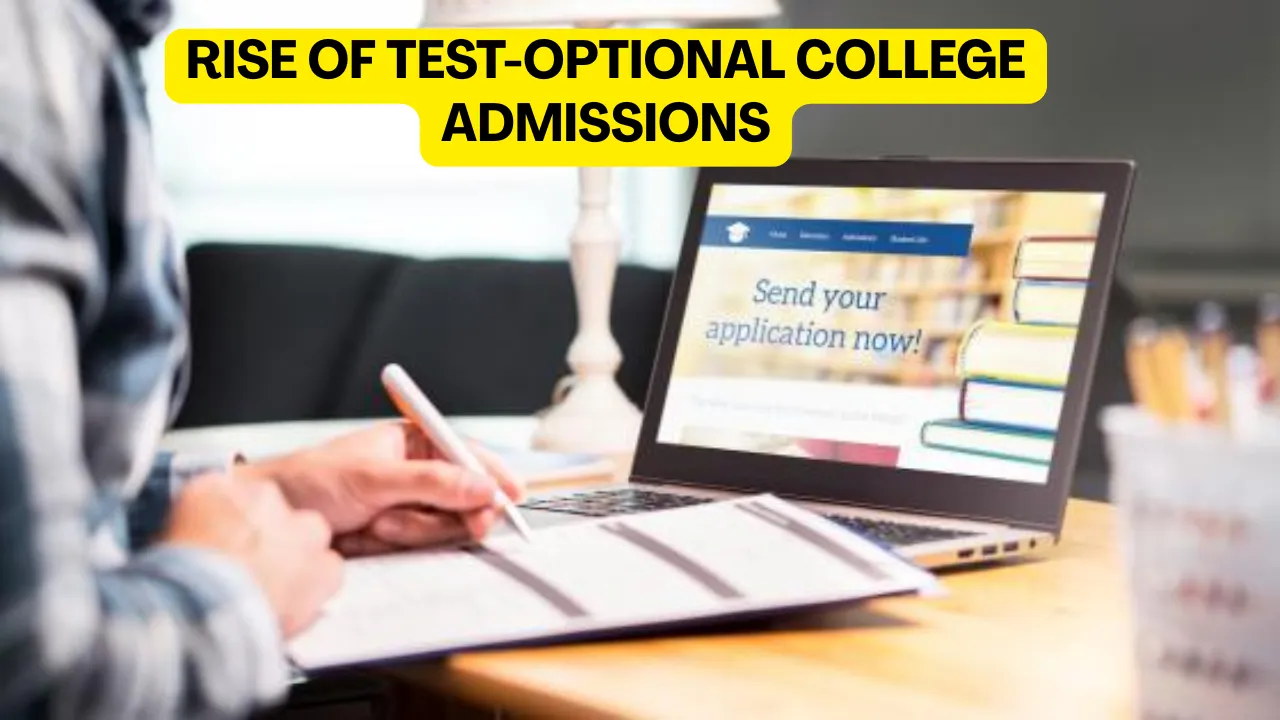Rise of Test-Optional College Admissions: Over the last few years, college admissions have experienced a significant shift. A growing number of colleges and universities across the United States are moving away from requiring standardized test scores, like the SAT or ACT, as part of their application process. Instead, they are adopting test-optional policies, giving students the choice to decide whether or not to submit test results. This movement reflects broader changes in how institutions evaluate applicants and aim to improve equity in higher education.
The push for more inclusive, holistic admissions isn’t new, but the momentum behind it has never been stronger. With more students applying than ever and colleges reassessing the role of test scores, the rise of test-optional college admissions is transforming the way students prepare for and approach college applications.
Rise of Test-Optional College Admissions
The rise of test-optional college admissions represents a clear shift in the academic landscape, fueled by concerns over fairness, accessibility, and student potential beyond test performance. By removing the mandatory SAT and ACT requirement, schools aim to level the playing field for students from diverse backgrounds. This trend has gained traction since 2020, when the COVID-19 pandemic disrupted standardized testing schedules, and it continues to grow as universities report more diverse and engaged applicant pools. Today, thousands of institutions, including major public and private colleges, have embraced test-optional models permanently, encouraging applicants to present a fuller picture of their academic and personal achievements.
Overview Table
| Policy Type | Test-Optional Admissions |
| Key Transition Year | 2020 (pandemic-triggered expansion) |
| Common Exams Affected | SAT, ACT |
| Evaluation Alternatives | GPA, essays, recommendations, coursework rigor |
| Participating Colleges | Over 1,800 U.S. colleges as of 2025 |
| Permanent Adoption Status | Increasing number of schools making it permanent |
| Main Goal | Increase equity, reduce reliance on test scores |
| Impact on Applicants | Broader access, holistic review, more flexibility |
Why the Shift Away from Standardized Tests?
Standardized tests have long been a central part of college admissions, designed to measure academic readiness. But over time, criticism has mounted. Many education experts and advocates argue these exams often reflect a student’s access to resources rather than their true potential.
- Socioeconomic disparities: Students from affluent backgrounds can afford expensive test prep, multiple test attempts, and personal tutors. Meanwhile, students from low-income or rural communities may lack access to these advantages.
- Pandemic disruptions: COVID-19 halted many in-person test dates, pushing schools to reassess the necessity of these exams in the first place.
- Focus on equity and diversity: Colleges aiming to build more inclusive campuses are realizing that eliminating test score requirements can help attract a broader range of applicants.
As a result, institutions began re-evaluating what matters most in identifying promising students.
How Admissions Offices Evaluate Students Without Test Scores
Without test scores, colleges now rely more heavily on other components of an applicant’s profile. This more holistic approach gives students the chance to highlight their unique qualities, academic consistency, and potential for success.
Here are the main factors schools now emphasize:
- Academic performance: A student’s GPA and the rigor of their coursework remain the most significant indicators of readiness.
- Personal essays: Essays provide insight into a student’s experiences, values, and aspirations, helping admissions officers connect with the person behind the application.
- Letters of recommendation: These provide valuable third-party perspectives from teachers or counselors who know the applicant well.
- Extracurricular involvement: Participation in sports, clubs, work, or volunteer efforts showcases commitment, leadership, and time management skills.
Some schools even allow students to submit portfolios or conduct interviews to further express their qualifications.
Test-Optional vs. Test-Blind Admissions
It’s important to distinguish between test-optional and test-blind policies, as they are not the same.
- Test-optional: Students choose whether to include SAT or ACT scores. If submitted, the scores will be considered as part of the application.
- Test-blind: Institutions will not look at test scores, even if they are submitted.
The University of California system famously went test-blind, removing test scores entirely from admissions consideration. Most colleges, however, remain test-optional, giving applicants the choice.
Student Benefits of Test-Optional Policies
The growing adoption of test-optional admissions policies offers clear advantages to students across the country:
- Less pressure: Without the need for a perfect score, students can focus more on their overall academic and personal development.
- Greater access: Students from underrepresented backgrounds have more opportunity to compete on a level playing field.
- Improved mental health: Reducing reliance on a single high-stakes exam lowers stress for many students.
- More application flexibility: Students can apply to a broader range of schools without being limited by test score expectations.
- Stronger fit with college mission: Schools can better assess students based on qualities that align with their values, such as leadership, creativity, and resilience.
Potential Concerns and Drawbacks
While the test-optional movement has been widely praised, it isn’t without criticism or concern:
- Increased application volume: Colleges report more applications, which makes the process more competitive and may disadvantage students from less-known high schools.
- Uncertainty for applicants: Students unsure whether to submit scores may second-guess what’s best for them.
- Scholarship eligibility: Some schools still require test scores for merit-based scholarships, even if they’re test-optional for admissions.
- Grade inflation concerns: In the absence of test scores, there’s concern over varying grading standards between schools, making it harder to compare applicants fairly.
Still, most colleges have found ways to manage these challenges through careful review processes and added evaluation methods.
Tips for Applying to Test-Optional Colleges
To stand out at a test-optional college, students should emphasize the following:
- Academic rigor: Challenge yourself with honors, AP, or IB classes when available.
- Standout essays: Write a compelling personal story that highlights your growth, passions, and potential.
- Strategic score submission: If your SAT or ACT scores are strong and exceed the average range for your target school, submit them.
- Well-rounded profile: Showcase leadership, service, and talents outside of academics to offer a fuller picture of who you are.
- Plan ahead: Research each college’s test policy carefully to know what’s required or recommended for your intended program or major.
FAQs
1. Should I submit my test scores to a test-optional school?
If your scores reflect your academic ability and are higher than the school’s average, it may strengthen your application.
2. Will not submitting test scores hurt my chances?
No. Schools review applications holistically. Many students are admitted without test scores each year.
3. Are test-optional schools really fairer?
They can help reduce barriers for students without access to resources. However, fairness also depends on how well a school evaluates all components of an application.
4. What if my school doesn’t offer many AP or honors classes?
Colleges review applications in the context of what was available to you. Show that you made the most of your opportunities.
5. Do scholarships still require test scores?
Some do. Always check the specific scholarship or school policy to avoid surprises.
Final Thought
The rise of test-optional college admissions is more than a trend—it’s a meaningful change in how academic potential is evaluated. By focusing on a student’s full profile rather than a single exam score, colleges are broadening access and opening doors to a more diverse range of applicants.
If you’re applying to college soon, take time to assess your strengths, build a strong application, and decide whether submitting your test scores truly benefits you. This shift gives you more control over your academic narrative—use it wisely.
Have insights or questions about the test-optional process? Share your thoughts below or explore our latest resources on navigating college admissions in today’s evolving landscape.






